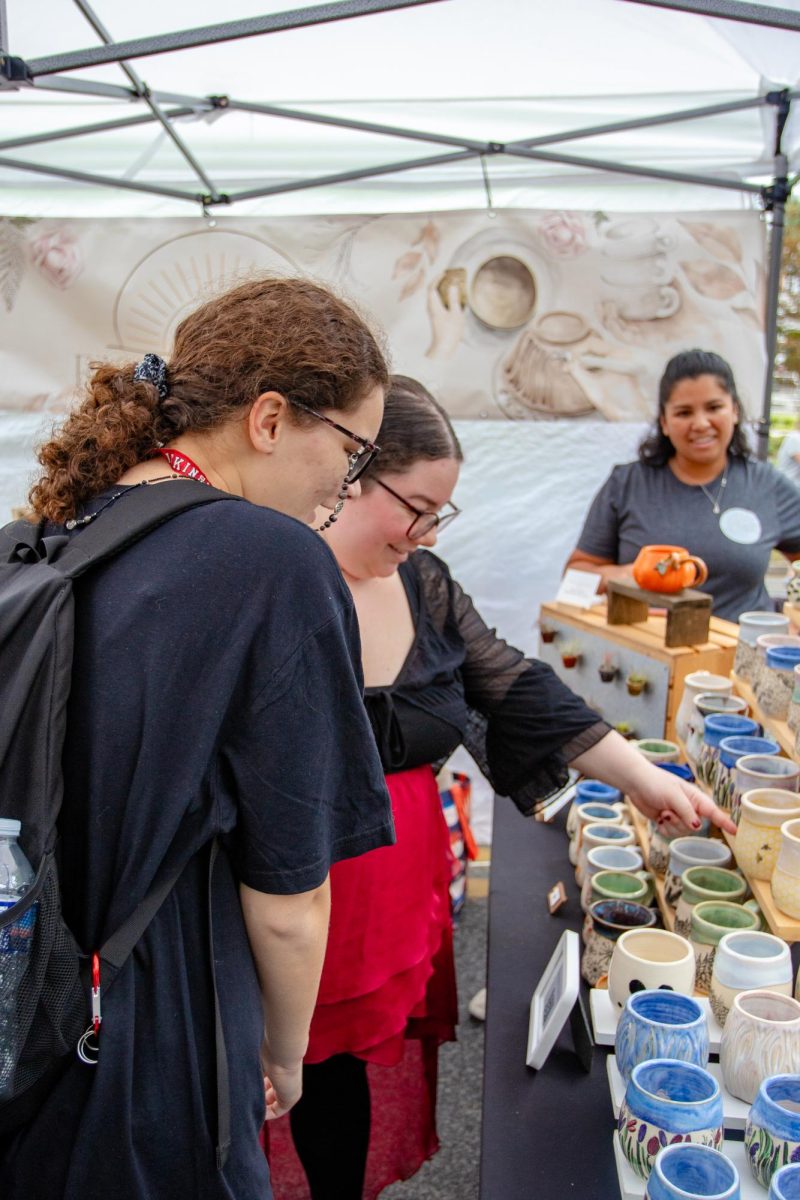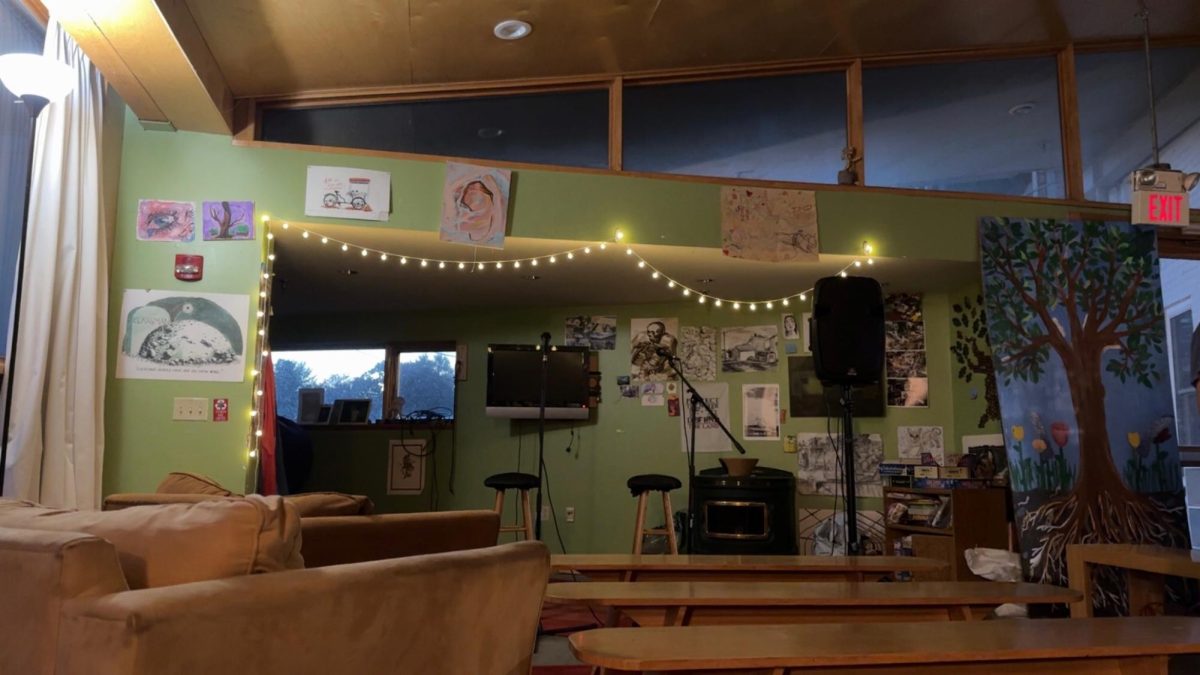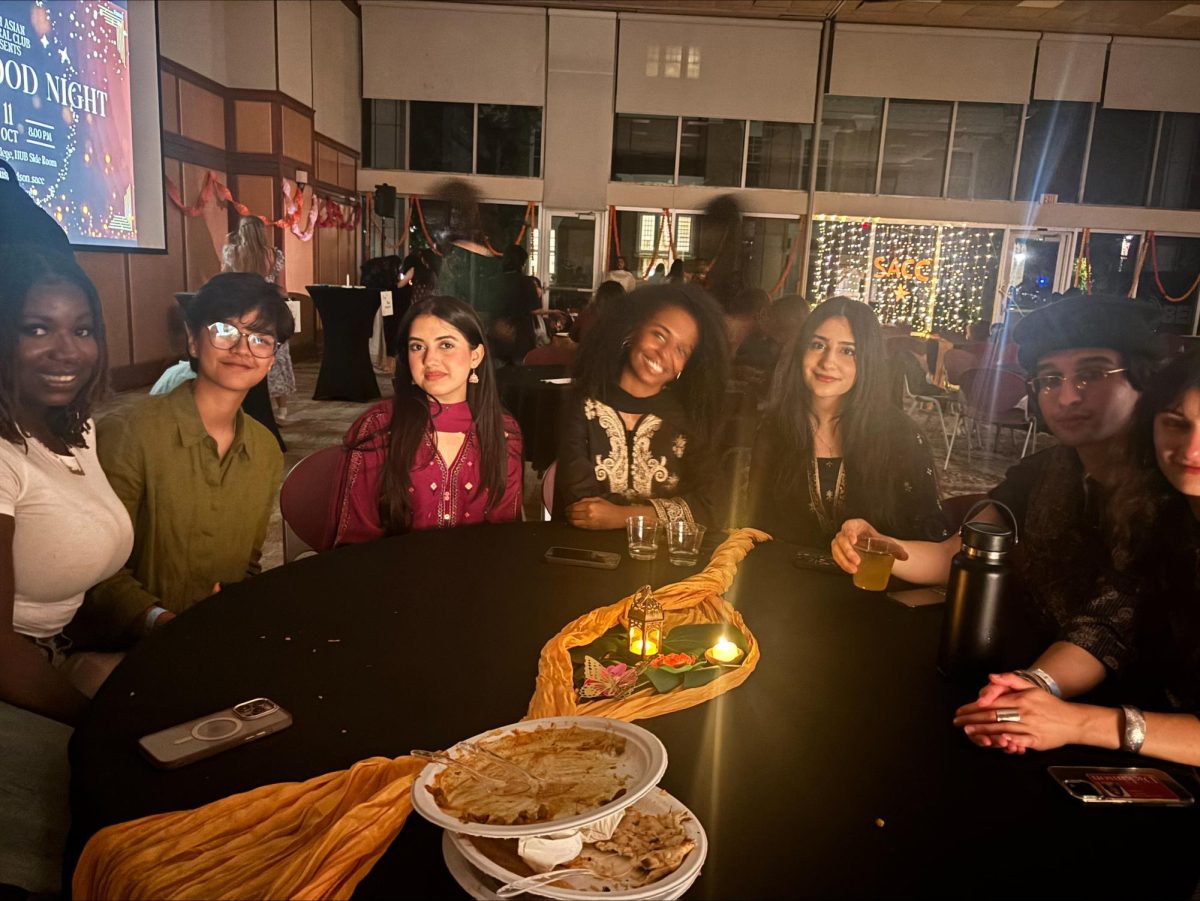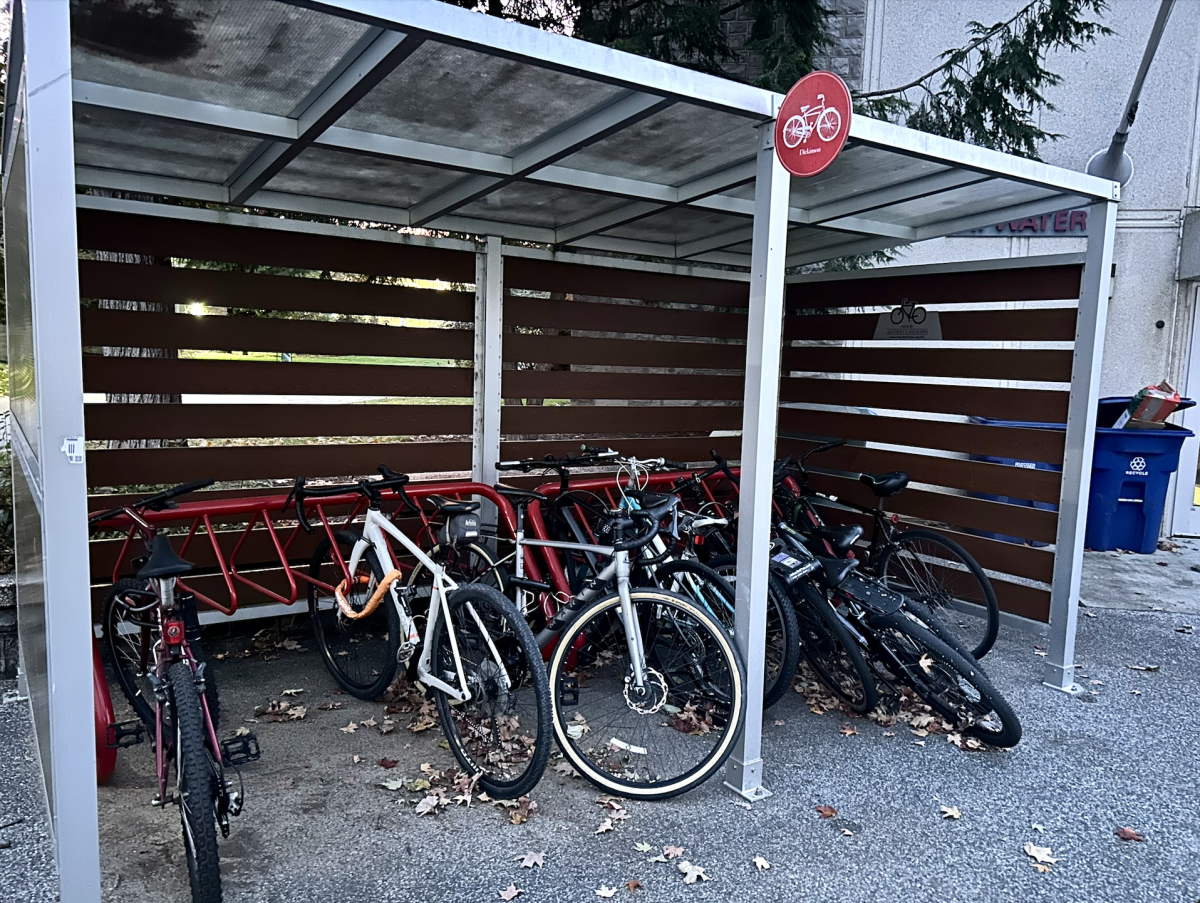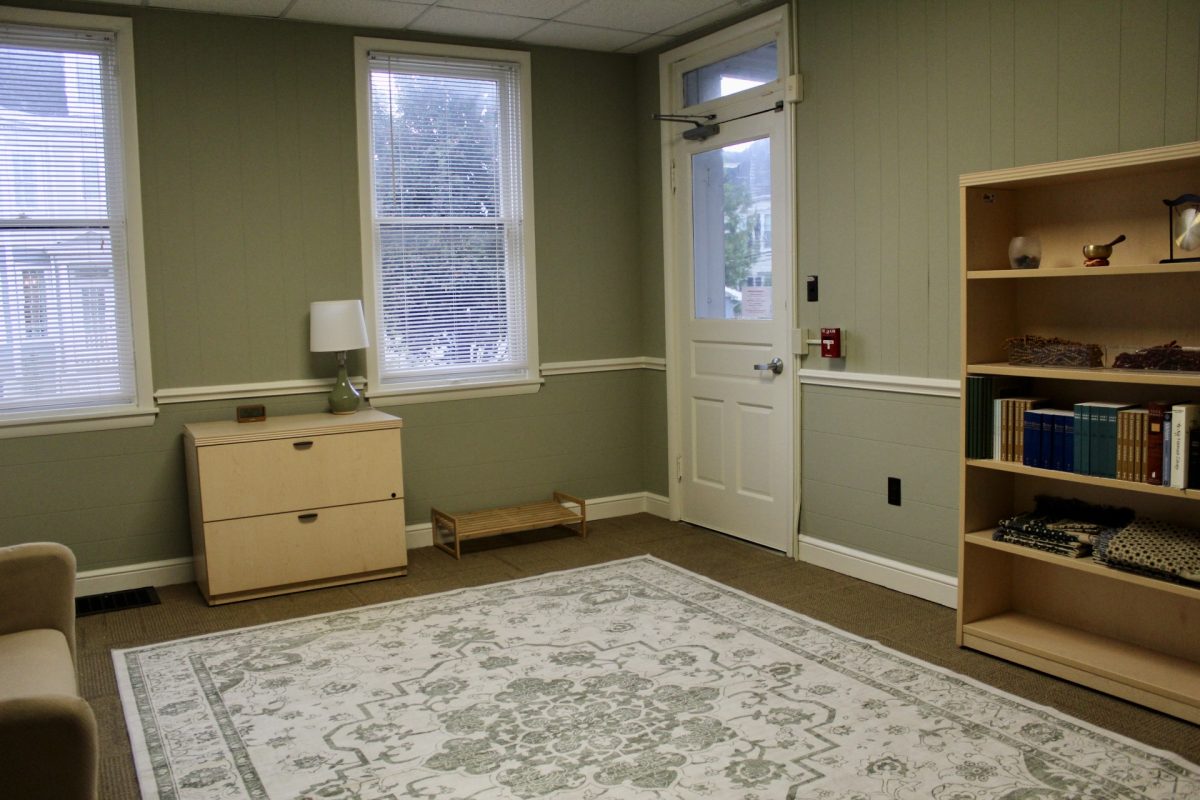Upon walking in, student ushers (dressed as waitresses) handed each audience member a paper plate. Lots of plates were passed, as the audience was almost completely full. On this plate was a picture of a famous, historical or influential woman on one side and a short description of the corresponding woman on the other side, reminiscent of Judy Chicago’s art installation “The Dinner Party,” which recognizes 1,038 important women.
While waiting for the performance to begin, ballerinas warmed up on stage, while one dancer wearing a waitress costume sat in a chair on her phone. As someone who has participated in theater, I thought it was odd that someone would openly be on their phone on stage, since that is a theater faux pas.
To my great surprise, this was part of the show’s four acts–one solo act was cut for concerns for the injured soloist–each uniquely beautiful and inspiring.
The first dance, “Beg, Borrow, Steal,” featured more waitresses dancing to choreographed music split up by an almost childlike improv game of Simon Says and musical chairs. After each round, the dancers returned to their seats, increasingly visually tired and audibly out of breath. To me, it was interesting to see the juxtaposition between childhood play and the mechanical, mature movements within the dance.
The second dance, “Colleen,” portrayed images of cheerleading, with the dancers using pompoms and a large cone megaphone as an extension of their dance. The soundtrack featured cheering fans and a marching band, highlighting the stereotype of cheerleaders as a gendered, female role. The dance portrayed dancers both pushing each other down or away and embracing or supporting one another, reflecting society–how women are often pitted against each other when in reality we should be embracing and supporting one another. The costumes were a fun mix of pink and red patterns, similar to how a child would dress themselves.
The third, “Women’s Dance,” featured a group of dancers in all white. They entered from the back of the house, engaging the audience as they moved up and down the stage, making direct eye contact with the audience each time they faced forward. The powerful performance included audio from the 1966 film “Who’s Afraid of Virginia Woolf?” Compared to the brightly colored costumes in the previous dances, the monochrome, white costumes were a change and evoked a powerful sense of collective femininity.
The fourth and final dance,“Violet,” made me tear up. It began with a single dancer in a long overcoat and heels clicking around the dark stage. Her steps quicked and her head snapped over her shoulder, as if being followed. As a woman, it felt real. The rest of the dance was a beautiful ballet, evoking the elegance, grace, and the power of women breaking societal expectations through taking off heels and shedding overcoats.
Each dance featured some kind of double standard, whether that be childhood and adulthood or power and purity or the desire to be one’s self and social norms, reflecting the common female experience. The almost completely female dance ensemble echoed themes of feminist artistic union inspired by “The Dinner Party” by Chicago. The show closed on a fun, empowering note with the smiling, proud dancers taking their bows to “Dance The Night” by Dua Lipa from “Barbie,” which was also a prevalent influence in The Dinner Party dance concert.




